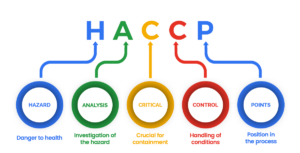How does the FDA interpret the regulations (21 CFR Part 211)
Laboratory “reagents, and standard solutions”, as referenced in the CGMP regulations at, includes laboratory chemicals such as solvents (including mobile phases), dry chemicals (salts, primary standards, etc.), and solutions (buffers, acids/bases, quantitative analytical preparations, etc.), whether purchased or prepared in-house. Laboratory reagents and solutions are used in analytical tests of components, in-process materials, and finished products.

How does the FDA interpret the regulations (21 CFR Part 211) regarding the establishment of expiry dating for chemicals, reagents, solutions, and solvents?
Laboratory “reagents, and standard solutions”, as referenced in the CGMP regulations at, includes laboratory chemicals such as solvents (including mobile phases), dry chemicals (salts, primary standards, etc.), and solutions (buffers, acids/bases, quantitative analytical preparations, etc.), whether purchased or prepared in-house. Laboratory reagents and solutions are used in analytical tests of components, in-process materials, and finished products.
If the purchased laboratory reagent or solution includes a manufacturer’s suggested “use by” or expiry date, that date should be followed. For purchased laboratory reagents and solutions without a “use by” or expiry date, FDA would expect that an assessment be conducted (literature review may be acceptable) of that specific chemicals or chemical family’s stability and that an appropriate “use by” or expiry date be determined.
For in-house prepared solutions, such as mobile phases or other non-quantitative solutions, FDA would expect that an assessment be conducted (again, literature review may be acceptable) to determine an appropriate expiry period. However, for in-house prepared solutions used for quantitative analysis, such as sample or standard solutions used in assay or impurity testing or titration solutions, FDA requires that formal stability studies be conducted to determine an appropriate expiry. As mentioned in Guidance for Industry: Q2B Validation of Analytical Procedures: Methodology, the stability of analytical solutions is a typical method variation that should be evaluated during robustness testing during method validation. Method validation is a CGMP requirement.
The determined “use by” or expiry dates should be documented within a procedure and followed. Procedures for any in-house prepared laboratory solution should include the determined stability timeframe, and should instruct that these solutions be labeled with the appropriately determined “use by” or expiration date upon preparation and discarded upon expiration.
These principles would also apply to API manufacturing and testing sites. The use of “reagents and solutions” and “use by” dates are found throughout Guidance for Industry: Q7, Good Manufacturing Practice Guidance for Active Pharmaceutical Ingredients.










